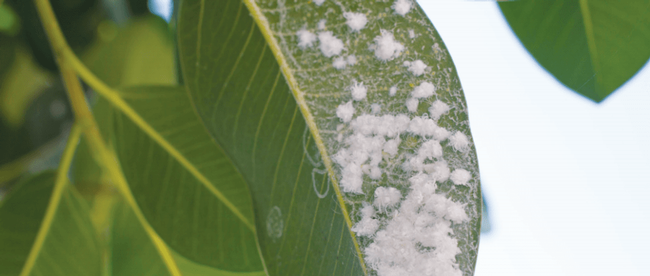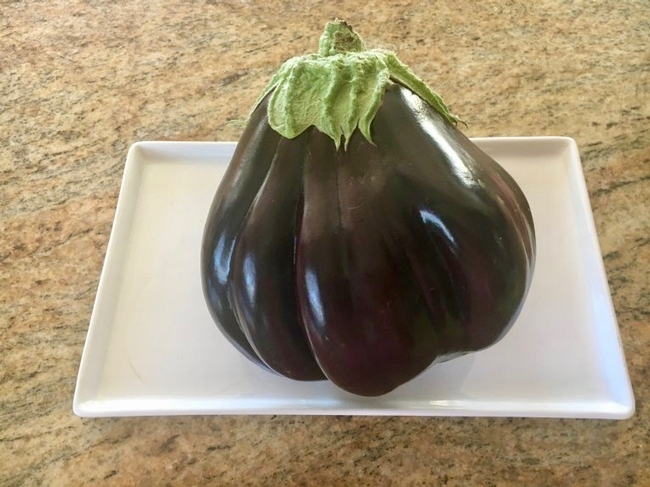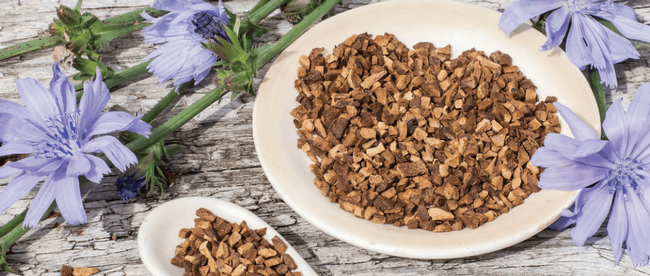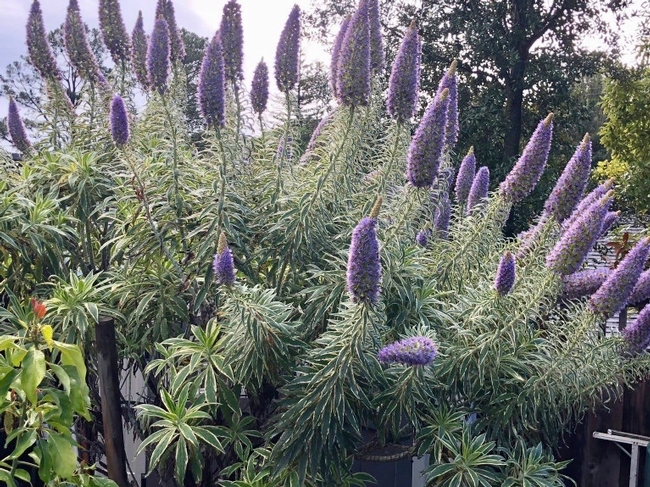If you have citrus trees, you likely have citrus mealybugs

Citrus mealybug description
All mealybugs are soft, flat, oval-shaped critters with segmented bodies. The mealybugs that attack Morgan Hill citrus are covered with a white wax that also creates spines (filaments) around the outer edge and the back end of the bug. Unless you use a hand lens you probably won't notice individuals, but mealybugs colonize areas creating white, fuzzy egg clusters that are easy to spot.
Mealybug lifecycle
When mealybug eggs hatch the crawlers are pale yellow with red eyes, and distinct antennae. Crawlers are not born with their protective wax coating. They begin to excrete it soon after hatching. They are called crawlers because they crawl to a feeding site, where they will continue to develop (and damage fruit) for a month or two.
Citrus mealybug damage
Each female mealybug can lay hundreds of eggs, and there are usually two or three generations a year, so infestations can become a problem. As sapsuckers, citrus mealybugs pierce fruit, leaves, and young stems to get at the sap. They also feed on tender, new growth. As they feed mealybugs leave behind a trail of honeydew that attracts ants and creates the perfect growth medium for sooty mold. Citrus mealybug feeding near fruit stems also leads to fruit drop. This feeding also reduces fruit quality. Trees fail to thrive and are prone to infestation by disease and other pests. In addition to oranges, lemons, limes, and grapefruit, citrus mealybugs also have a taste for ornamental plants, such as tulips, coleus, cyclamen, begonias, and dahlias.
How to control citrus mealybugs
The first step to controlling citrus mealybugs is to monitor your trees, especially in spring and fall, for signs of ant trails, sooty mold, and egg clusters. Since ants will protect and farm the aphids for their honeydew, apply sticky barriers to tree trunks to block ants from protecting the aphids against natural predators. Those natural predators are your trees' best defense against citrus mealybugs. Lady beetles, lacewings and hoverflies will devour these pests so avoid using broad-spectrum pesticides. For extreme infestations, you can buy an introduced predator called the mealybug destroyer (Cryptolaemus montrouzieri). Insecticides are not recommended. Diatomaceous earth and insecticidal soaps can also be used.
Mealybugs prefer dusty conditions so hosing trees off can make them less appealing to citrus mealybugs.
by UC Master Gardener Kate Russell
This article first appeared in the March 23, 2018 issue of the South Valley Magazine.
Cabbage aphids wreak havoc in the garden

Cabbage aphids (Brevicoryne brassicae) can wipe out a cabbage crop before it ever gets started. Native to Europe, this pest of cole crops is now found throughout the United States.
Like other aphids, cabbage aphids are small, teardrop-shaped, sap-sucking pests that can reproduce at an alarming rate. While soft-bodied cabbage aphids are actually grayish-green, they look powdery blue to grayish-white because of a waxy covering. Cabbage aphids are not difficult to see because they live in dense colonies that can cover stems, new leaves, and entire plants practically overnight. In our moderate climate, these pests produce live offspring year-round.
Aphid defense
Cabbage aphids have an amazing defense mechanism. They produce an enzyme in their head and throat muscles which gets combined with defensive chemicals (glucosinolates) from their host plants to create an explosive chemical reaction. This reaction produces mustard oil. Unfortunately, this “walking mustard oil bomb” defense is particularly effective against ladybug larva.
Vulnerable plants
Cabbage aphids feed on the youngest, most tender parts of new cabbage, broccoli, Brussels sprouts, kale, and cauliflower. These pests also eat the innermost parts of cabbage and Brussels sprouts heads. Large colonies can stunt or even kill young plants. Heavy aphid feeding causes leaves to curl up, providing the pests with a protective cover.
Aphid controls
Prevention is key to cabbage aphid control. Row covers are an excellent way to protect young crops while they are getting established. Once aphids are seen you can often use a strong spray from the garden hose to dislodge them. If that doesn't work, insecticidal soaps can provide some control. Since some insecticidal soaps may be phytotoxic (meaning sunlight causes them to burn the plant), it is a good idea to apply them on a foggy day, especially for cabbage and Brussels sprouts.
Another way to make life more difficult for cabbage aphids is to remove any weeds in the mustard family from your property. Cabbage aphids hide out in the mustard and then return to your garden plants. Pesticides can be used as a last-ditch effort, but aphids are developing resistance to these chemicals—a potentially dangerous spiral.
Another problem with using pesticides against cabbage aphids is that those same chemicals also kill beneficial, predatory insects, such as lady beetles, parasitic wasps and syrphid flies (hoverflies). These helpful insects are natural predators of caterpillars, imported cabbage worms, diamondback moths, loopers and armyworms, which can cause other problems for your cole crops.
Monitor your plants every couple of days and be on the lookout for cabbage aphids!
by UC Master Gardener Kate Russell
Photo: South Valley Magazine
This article first appeared in the February 9, 2018 issue of the South Valley Magazine.
And what to do this month in your garden

Eggplants come in all shapes, sizes, and colors. Japanese and Chinese varieties are usually long and narrow and can be lavender to deep, dark purple. Indian (sometimes call baby eggplant because they are so small) are reddish purple and are great in curry, stuffed, or roasted. Some Thai eggplant are actually green when ripe. “Fairy Tale” are very small, can fit in the palm of your hand, and are a beautiful purple with white stripes. They are very tender and great for grilling. “Little Green” has pale-green skin and is mild and very creamy when cooked.
Now is a great time to plant your eggplant (from transplant). They are easy to grow, even in containers. They grow best in a warm, sunny location with at least 6 or more hours of direct sunlight. They should be spaced about 24-36 inches apart.
They are upright growers but will need support once they start fruiting to hold all the weight of the abundant fruit. When planting, mix in a good organic compost and some slow-release fertilizer. With proper care and feeding, many varieties will keep producing well into the winter months – I have often served them with my Thanksgiving dinner.
This month in your garden
- Check irrigation and mulch: If you haven't already inspected your irrigation system or put down that very important layer of mulch, it's not too late. Do it before the summer heat sets in.
- Deadhead roses, salvias, and dahlias to encourage continual blooming. Remove spent buds from camellias, rhododendrons, and azaleas.
- Control earwigs which feed on soft plants and can cause significant damage. Trap them by setting out moistened, tightly rolled newspaper at night and then discard it in the morning.
- Fire blight shows up in the spring. It causes blackened branches and twigs that look like they have been scorched. It often affects fruit trees such as apple, pear, loquat, and quince; as well as toyons, hawthorns and crabapples. It is spread by insects, rain, and pruning. If left unattended it can kill the tree. Prune the infected branch about 8-12 inches below the visible damage.
- Prune suckers from rose bushes. It can be difficult to tell the difference between suckers and basal canes. They both shoot straight up with vigorous growth. Suckers grow from below the bud union. Basal canes originate at the bud union and should be left on – they are the best wood on the plant.
- Don't forget to deep water your trees (especially if they are less than three years old). We are likely moving back into drought conditions; deep watering once a month will help protect those environmentally-important fruit and ornamental trees. It takes much less water to preserve established trees than it does to start new ones!
Plant this month
- By seed: arugula, beans, beets, Brussels sprouts, corn, cucumber, melons, summer and winter squash.
- By transplant: arugula, basil, beans, beets, corn, cucumber, eggplant, melons, mint, peppers, summer and winter squash, and tomatoes. Local nurseries should have a good supply of most of these.
Give back
Too much fruit? If you have an abundance of fruit and have already “over-shared” with your neighbors, contact Village Harvest. They offer volunteers that will pick your fruit and then donate it to a worthy food bank.
by UC Master Gardener Rebecca Jepsen
This article first appeared in the June 10, 2018 print issue of the San Jose Mercury News.
Chicory is commonly used as a coffee substitute

Chicory is a woody perennial that comes in many different varieties, depending on the cultivar used: roots (var. sativum) and leaves (var. foliosum) are the most common. Chicory, occurring naturally, can indicate compacted soil. Luckily, its deep taproot help breaks up that compacted soil, plus it's drought tolerant!
Chicory as food
Chicory is a highly versatile plant. Its slightly bitter leaves are used in salads, the buds can be blanched, and the taproots are frequently roasted and ground up as a coffee substitute. You can reduce the bitterness by changing the cooking water two or three times. Roots are harvested before flowering stems emerge. These roots can be cooked and eaten the same as carrots or parsnips, ground into flour for bread, or used as a coffee substitute. Plus, chicory contains twice as much of the cancer-fighting, heart-healthy polyphenols found in spinach.
Chicory description
A member of the daisy family (Asteraceae), chicory (Cichorium intybus) is one of those large, gregarious groups that may surprise you. For example, curly endive, Belgian endive, and radicchio are all types of chicory. Lettuce and dandelions are close cousins, while chicory's distant cousins include sunflowers, artichokes, and yarrow. Also known as cornflower, bachelor's buttons, coffeeweed, blue daisy, and wild endive, chicory's flowers are composite, and leaves are normally toothed or lobed. Plants grow 10 to 40 inches tall. Flowers appear July through October.
How to grow chicory
In our planting zone (9b), chicory is a cool season crop that can be started in January and February for an early summer crop, and again in July or August for an early winter crop. This gives the seeds time to get started before the weather turns too hot or too cold. Summer's heat causes chicory to bolt, but a light frost actually adds just a touch of sweetness. Seeds should be planted 1/4 inch deep and thinned to 12 inches apart. Avoid overhead watering, as the leaves are prone to rotting.
Chicory pests and diseases
Despite its rugged nature, there are some pests and diseases that can impact chicory. Bacterial soft rot, damping off disease, fusarium wilt, white mold, anthracnose, and downy mildews are all diseases that attack chicory. Aphids, cabbage loopers, beetles, leaf miners, thrips, and slugs and snails may feed on your chicory plants.
Chicory grows like a weed. Once established, you can pretty much ignore it until you decide to harvest whatever part you have a hankering for. And, hey, even the flowers are edible!
by UC Master Gardener Kate Russell
Photo: South Valley Magazine
This article first appeared in the December 17, 2017 issue of South Valley Magazine.

I have to tell you, I literally hit pay dirt. I planted one Echium fastuosum, “Star of Madeira”, and it is not only a major bee-magnet, it is absolutely stunning! With hundreds of profuse bluish-purple flowers atop tall spikes that tower above the attractive, variegated foliage, it has become the focal plant in my garden. It is also a favorite for my hummingbirds and butterflies.
When I planted it about three years ago from a 2-gallon pot, it was about a foot tall. Now It is now nearly 7 feet tall and about 5 feet across. It would actually be bigger but I continue to prune it so that I have room for the apples and avocados that are planted nearby.
There are more than 60 species of Echium, some are native to North America, others are from Europe and the Macaroneisa. Although some are grown as food for humans, butterflies, or moths, most Echium are grown as ornamental plants.
Probably the most common varietal you will find in the Bay Area is Echium candicans, “Pride of Madeira”. Its silvery-green foliage sports masses of very blue/purple blooms from early spring to mid-summer. It can easily grow 8 feet tall by 6 feet wide and is a heavy self-seeder, so you may want to dig up and gift most of those starts.
Echium amoenum, “Red Feathers”, is for those of you who want something a little more on the compact side. They grow only about a foot and half tall by about 6-to-8 inches wide. This plant is known to thrive on neglect, is suitable for clay soil and can handle cooler climates. The red feathery blooms attract an array of bees and butterflies. Although it is known to be short-lived, it will reseed itself if you resist deadheading all of the dried blooms.
Echium vucanorum, is a truly beautiful, and quite rare, white blooming varietal. It is native to a tiny West African island named Fogo. It will quickly grow to 6 feet high and wide and may do best with some afternoon shade in hotter areas.
And for maybe one of the coolest plants you can grow, try Echium wildpretii. It is a biennial from the Canary Islands. In its second year, it will send up tall spikes (up to 7 feet) of gorgeous dark pink/reddish flowers. Let it fully mature so that it can reseed and keep on going … the bees and birds love this one!
I believe every garden and every landscape should have at least one bee-friendly Echium. Most need a good bit of room to thrive and grow and at least six hours of sunlight per day. They are very drought-tolerant but do need regular watering for the first couple of years in order to get established. They prefer well-draining soil, but some can tolerate relatively poor conditions.
Many Bay Area nurseries carry several options. You can also do a Google-search of Echium to find unique and rare varieties. This may become your new favorite plant.
by UC Master Gardener Rebecca Jepsen
Photo courtesy of Rebecca Epsen
This article first appeared in the April 22, 2018 print issue of the San Jose Mercury News.

